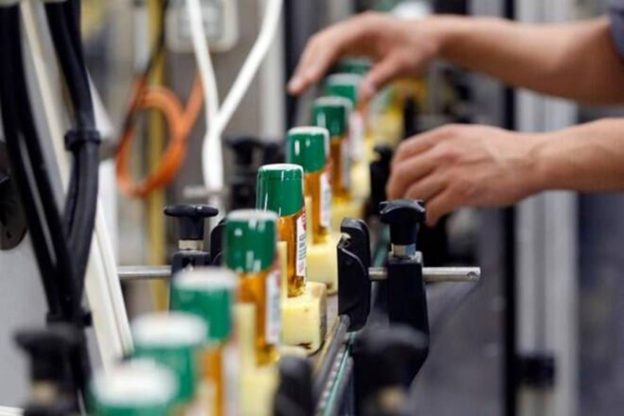Instead of a one-size-fits-all approach, the govt needs to finetune the PLI scheme to fit the unique needs of the biopharmaceutical industry
In the face of the biggest health calamity faced by humanity in a century, India’s bioeconomy grew over 12% to reach $70.2 billion in 2020. The biotech industry braved the challenges of Covid-19 to develop innovative solutions such as diagnostics, therapies and vaccines at speed and scale to save countless lives.
India drew on its significant strengths in research, innovation and manufacturing scale to fight Covid-19. The Atmanirbhar Bharat framework aspires to build on these inherent strengths while collaborating internationally to make a global impact. Our ability to adapt to the changing global reality with proper resources, plans and policies will enable us to evolve from being the ‘pharmacy to the world’ to the hub of cutting-edge biomedical innovation and research. It will also enable us to realise our aspirational goal of creating a $150 billion bioeconomy by 2025.
The government, through the Department of Biotechnology (DBT), has made tremendous efforts in promoting bioscience research, translational education and entrepreneurship. This, coupled with a burgeoning start-up ecosystem, is unleashing biotech innovation in the country. India needs to build on this momentum by putting in place a comprehensive biotech strategy encompassing investment, R&D, exports and a strong start-up culture.
Investments: Fine-tuning the PLI scheme
India has been strong in manufacturing generic drugs, and is now leveraging this prowess to produce specialty drugs, vaccines and biologics. To achieve global leadership in biologics, we need to enhance the capacity, competency and infrastructure available in the country.
The PLI scheme has introduced various incentives to promote self-reliance in local manufacturing of bulk drugs, while also encouraging the biopharma industry to move up the value chain through innovation.
Instead of a one-size-fits-all approach, the government needs to fine-tune the PLI scheme to fit the unique needs of the biopharmaceutical industry. For example, development of biologic molecules is costly and time consuming, requiring complex clinical studies over 5-7 years. In comparison, cost of development and gestational times (1-2 years) is much lower for generic small molecule drugs. Hence, the weightage given to regulatory submissions for biologics must be higher than for generic formulations. A well-designed PLI scheme will give biopharma manufacturing a much-needed boost.
Exports: Incentives for global competitiveness
The expansion of local manufacturing scale should not just aim at catering to the domestic market. Companies need to be able to tap global markets, for which India needs a strong policy that provides incentives for exports. Under the SEZ regime, units were eligible for a tax holiday up to March 31, 2020. To give a stimulus to export-oriented industries, the SEZ tax holiday benefits need to be reintroduced with a deduction of 50% export profits for the next five years for existing units.
Research: Incentives for risk investing
Research-linked incentives can provide the impetus to increase R&D investment, as well as build much-needed linkages with the academia for breakthrough research. The government will need to first identify key emerging research opportunities for innovation and bring back the 200% weighted tax deduction covering all R&D expenditures pertaining to the ‘lab to market’ journey, including patenting costs.
The government should provide a five-year tax holiday to products resulting from research-led efforts in select areas of innovation. It should increase the scope for patent box (10% tax rate u/s 115BBF) to include incomes from royalty and income from India-based R&D leading to global patents. Commercial income from patented products must also be included.
‘Virtual’ biotech companies that are generating revenue through innovative R&D without a manufacturing facility or commercial products in the market should be eligible for tax incentives. Introducing a PLI-type scheme to grow capabilities and incentivise clinical trial service providers will restore India’s position as a global clinical studies destination.
Start-ups: Easing access to capital
The government’s support has led to the creation of a robust biotech start-up ecosystem. India had over 4,200 biotech start-ups in 2020, about 25% more than in 2019. It needs to create an environment that allows these start-ups to scale up.
As capital is the life-blood of start-ups, the government should augment BIRAC funding to `3,000 crore annually so that it can provide start-ups with the necessary funds to scale up. The government should also eliminate the condition of 51% Indian shareholding for availing grants from BIRAC/DST.
To supplement funding avenues, India Inc should be allowed to set aside a part of their CSR funds to support grants at BIRAC. CSR contributions to support ignition grants at incubators and academic research institutions should also be permitted. The government should fix both short- and long-term capital gains tax at 5% for angel and VC investors in life sciences start-ups to encourage more players to take a bet on biotech. Besides, it should provide a 10% weighted advantage to start-ups in government tenders. Regulations need to be tweaked to enable biotech and other start-ups to access capital markets.
To capture the huge opportunity in biotech, India will have to act expeditiously, and the government will have to play an enabling role by creating a suitable physical, financial, legislative and regulatory infrastructure.
https://www.financialexpress.com/opinion/150-billion-bioeconomy-by-2025-policy-prescriptions-for-building-a-vibrant-biotech-sector/2312066/







